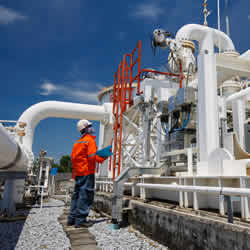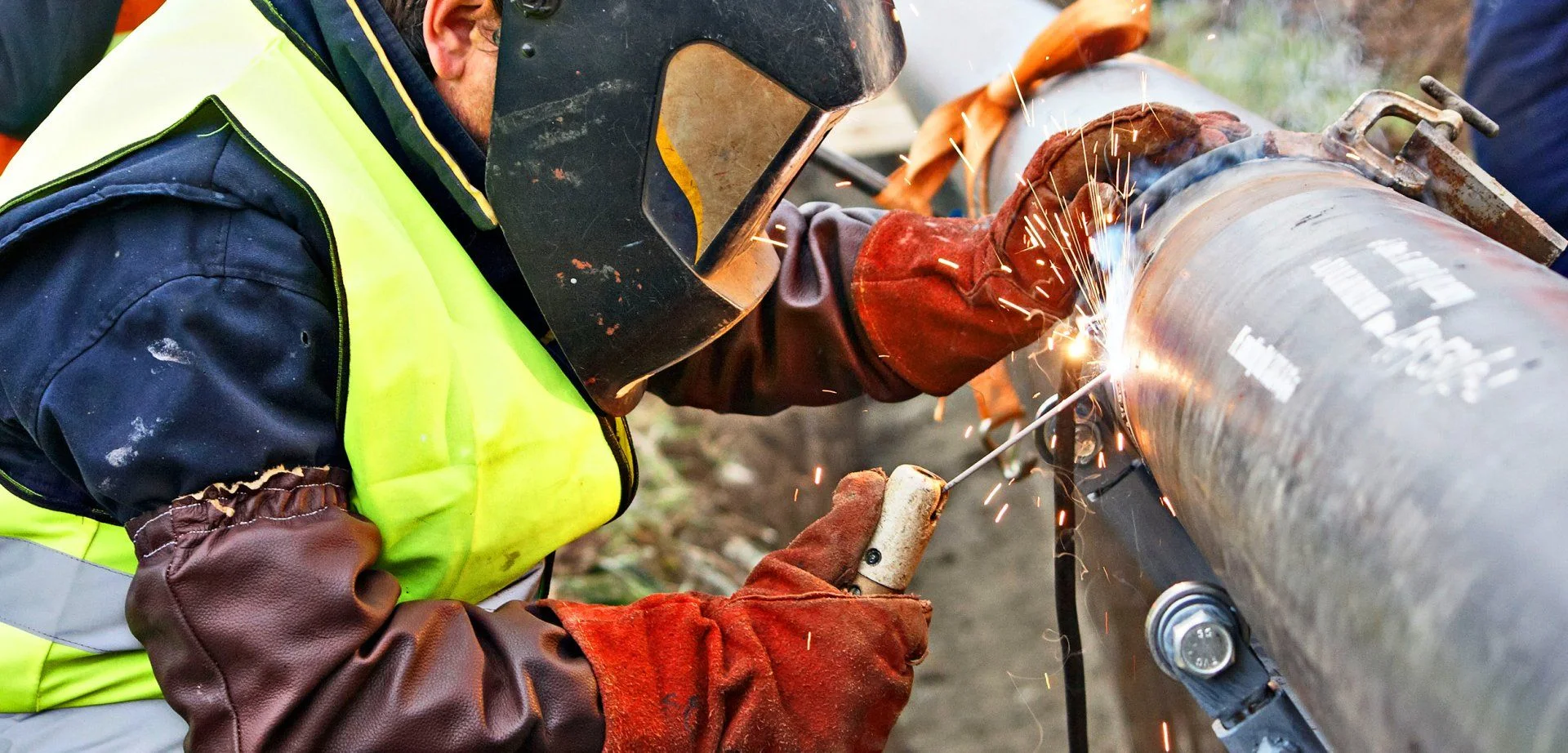Pipeline Welding Inspection: Critical Steps for Reliable Pipeline Construction
Pipeline Welding Inspection: Critical Steps for Reliable Pipeline Construction
Blog Article
Recognizing the Principles of Pipe Welding Examination: Critical Factors for Evaluating Weld High Quality and Stopping Failures
In the world of pipeline welding examination, the stakes are unquestionably high, demanding an extensive understanding of basic principles to make certain weld high quality and minimize failure dangers. Various vital factors come into play, consisting of the choice of ideal materials, the application of sophisticated examination techniques, and the recognition of widespread welding defects.
Significance of Weld Top Quality
The integrity of a pipe is basically reliant on the high quality of its welds, making weld high quality a critical consider making certain safe and efficient operation. A pipeline weld offers as a joint factor where products are signed up with, and any deficiencies in this field can bring about significant structural weaknesses. Poor weld high quality can lead to leakages, tears, and disastrous failings, posing severe security dangers and ecological threats.
Numerous variables add to the top quality of a weld, consisting of the selection of welding process, the skills of the welder, and the conditions under which the welding is performed - Pipeline Welding Inspection. Inadequate preparation, improper heat input, and contamination can compromise weld honesty, bring about issues such as porosity, incomplete blend, or splits. Consequently, rigorous quality assurance actions need to be carried out throughout the welding process to reduce these threats
Additionally, the long-lasting performance of a pipe is heavily influenced by the resilience of its welds. Top quality welds not only boost the total strength of the pipe however likewise prolong its service life, decreasing the need for pricey fixings and downtime. For this reason, making sure superior weld high quality is vital in pipe design and upkeep methods.
Key Examination Methods
Ensuring weld top quality requires the implementation of reliable evaluation strategies to determine potential problems prior to they cause failures. Pipeline Welding Inspection. Among one of the most widely used techniques are aesthetic assessment, radiographic testing (RT), ultrasonic screening (UT), and magnetic bit testing (MT) Each method is and offers an unique objective chosen based upon the particular requirements of the pipe task
Aesthetic inspection is the initial line of defense, allowing assessors to analyze surface conditions, alignment, and overall workmanship. Radiographic testing provides a detailed view of internal weld integrity by using X-rays or gamma rays to spot subsurface problems.
Ultrasonic testing utilizes high-frequency acoustic waves to evaluate the density and stability of welds, making it ideal for spotting interior interruptions. Magnetic bit testing is a dependable technique for recognizing surface and near-surface issues on ferromagnetic products by using magnetic areas and great ferrous particles. By utilizing these vital evaluation strategies, pipe welding inspectors can make certain the best requirements are maintained, inevitably bring about much safer and much more dependable pipe systems.
Typical Welding Problems
In the realm of pipe welding, understanding typical welding flaws is important for maintaining architectural stability and safety and security. These problems can bring about tragic failures if not recognized and attended to quickly. Amongst one of the most prevalent flaws are porosity, which occurs when gas allures in the weld metal, developing voids that damage the joint. One more significant concern is lack of blend, where the weld metal does not adequately bond with the base page material, endangering the joint's strength.

Cracks are likewise an important concern, materializing in different types such as warm splits, cold cracks, and root fractures. Each type positions special obstacles and requires certain examination techniques for detection. Undercut is another problem that can minimize the weld's cross-sectional area, causing stress and anxiety concentration points, while slag addition takes place when non-metallic product ends up being caught in the weld pool, negatively impacting the mechanical residential or commercial properties of the weld.
Furthermore, inaccurate bead shape can lead to uneven stress distribution. Recognizing these usual issues is crucial for welders and inspectors alike, as very early discovery and adjustment are important to guaranteeing the longevity and reliability of pipe systems.

Products and Their Influence
Choosing the appropriate products for pipe welding substantially affects the overall performance and reliability of the welded joints. The selection of base metals, filler products, and layers plays an essential duty in figuring out the strength, rust resistance, and sturdiness of the welds. For circumstances, carbon steel is commonly utilized for its equilibrium of toughness and price, but it may be prone to deterioration in particular environments, requiring the use of corrosion-resistant alloys or protective coverings.
Additionally, different steel welding calls for mindful factor to consider of thermal expansion residential properties and possible galvanic deterioration. The compatibility of products can substantially influence the microstructure of the weld, leading to variants in mechanical properties. As an example, stainless steel supplies exceptional deterioration resistance however might need certain filler products to make sure a sound weld joint.
On top of that, the influence of temperature level and environmental conditions on material choice can not be ignored. High-strength steels may shed ductility at raised temperature levels, while low-temperature applications may require products with improved toughness. Ultimately, recognizing the effects of product choices is crucial for attaining optimum weld top quality and avoiding failures in pipe systems.

Regulatory Specifications and Conformity
Governing requirements and conformity play a critical duty in pipeline welding, developing the structure within which reliable and safe practices are maintained. These standards are developed by various organizations, consisting of the American Culture of Mechanical Engineers (ASME), the American Welding Culture (AWS), and the Pipe and Hazardous Materials Safety Administration (PHMSA) Adhering to these regulations guarantees that welding treatments fulfill the called for top quality and security criteria.
Compliance with regulatory standards is crucial not just for making sure the stability of the welds however also for protecting the setting and public security. Examiners are tasked with verifying that welding procedures conform More Bonuses with these standards through strenuous assessments of both the processes and the last welds. This includes evaluating welder qualifications, welding procedures, and the materials made use of.
Failure to follow well-known guidelines can lead to substantial repercussions, including pricey repair work, lawful obligations, and catastrophic failings. For that reason, companies need to incorporate conformity into their functional techniques, promoting a culture of security and quality. Normal training and audits are vital parts in preserving adherence to these governing requirements, making certain that all workers are knowledgeable and equipped to maintain the highest degree of pipe welding quality.
Final Thought
Finally, a detailed understanding of pipe welding inspection is crucial for making certain weld quality and stopping failings. By employing key assessment strategies and recognizing typical welding flaws, assessors can effectively evaluate the stability of welds. Factor to consider of product selection and adherence to regulatory requirements additionally boost the integrity and safety and security of pipeline systems. Ultimately, these methods add to the prevention of leakages and disastrous failings, emphasizing the critical importance of rigorous evaluation processes in pipeline building and maintenance.
In the realm of pipeline welding inspection, the risks are undeniably high, demanding a thorough understanding of basic concepts to guarantee weld quality and mitigate failing dangers (Pipeline Welding Inspection).The stability of a pipeline is basically reliant on the high quality of its welds, making weld high quality a crucial element in ensuring risk-free and efficient procedure.Several elements add Discover More Here to the high quality of a weld, consisting of the selection of welding process, the abilities of the welder, and the conditions under which the welding is performed. Undercut is an additional flaw that can reduce the weld's cross-sectional location, leading to tension focus points, while slag inclusion happens when non-metallic material comes to be trapped in the weld swimming pool, negatively affecting the mechanical residential or commercial properties of the weld
In verdict, an extensive understanding of pipe welding evaluation is essential for guaranteeing weld top quality and avoiding failings.
Report this page